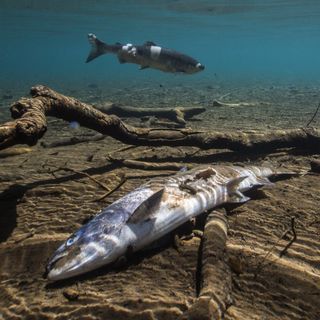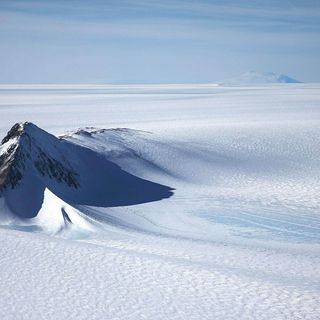Italian scientists are investigating the sudden emergence of pink ice in the Alps, the highest European mountain range. They believe naturally occurring algae darkened the snow’s shade to pink.
However, this is not good news, as darker colored snow will naturally absorb more heat, which will accelerate its melting.
The algae itself — called Ancylonema nordenskioeldii — is not dangerous. “It is a natural phenomenon that occurs during the spring and summer periods in the middle latitudes but also at the Poles,” Biagio Di Mauro from Italy’s National Research Council, told Agence France-Presse. Similar algae was previously observed in Greenland’s ‘dark zone,’ a region covered in dust and black carbon that helped provide nutrition for dark-colored algae. The melting ice exposes algae to air and water, providing it the nutrition it needs to further multiply, starting a destructive cycle.
Algae turns ice pink in Italian Alps, accelerating loss of glaciers.
Normally ice reflects about 80% of the sun's radiation back into the atmosphere, but the algae darkens the ice causing it to absorb the heat and melt more quicklyhttps://t.co/r4YoEgMqar
📸 Miguel Medina pic.twitter.com/HR5ffI17wa
The effect that the algae will produce — further accelerating ice melting in a mountain range that is set to lose two-thirds of its ice range by 2100, is alarming. Natural climate change processes are normal, but will absolutely cause greater harm when combined with the rapid changes caused by human intervention.
However, human interest in this rapid change often stops at the spectacle of the change. Pink snow, pink lakes, and other such natural phenomenons may be pretty, but our engagement with them cannot stop at mere mild awe. Especially not when the nature and climate are rapidly changing, often for the worse.
Related on The Swaddle:
Transgender Kids’ Brains Reflect Their Gender Identity in Structure and Function
Maharashtra’s 50,000 year old crater lake — Lonar Lake — turned pink. People shared and appreciated the sight to the point where even tourism initiatives sought to cover it. Lonar Lake changed color due to a combination of high salinity and the presence of algae. The reason for unusually high salinity? There was not enough rain to pour freshwater into the lake. Researchers also previously reported that Lonar Lake is shrinking, due to extensive diversion of water for agricultural purposes. Yet, the dark part of this beautiful phenomenon was barely covered by the news, or spoken about.
The environment does not merely exist to please our eye; it is a complex set of systems that, in part, assist human survival. It is our responsibility to remain aware of natural and climate change, and how it will affect the ecosytems around it.




